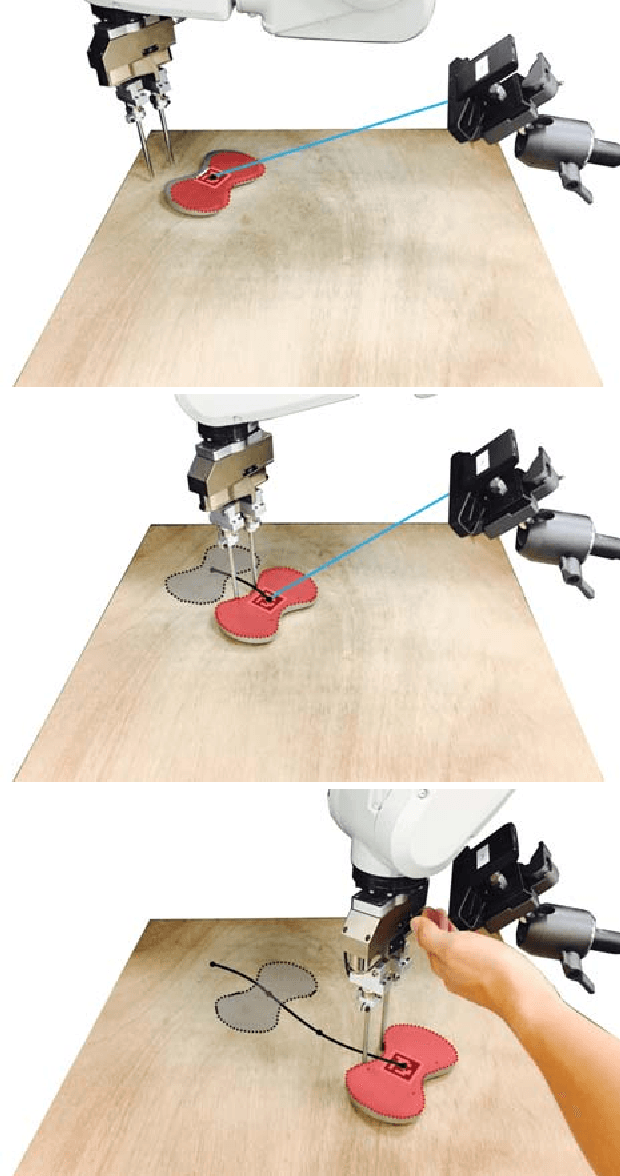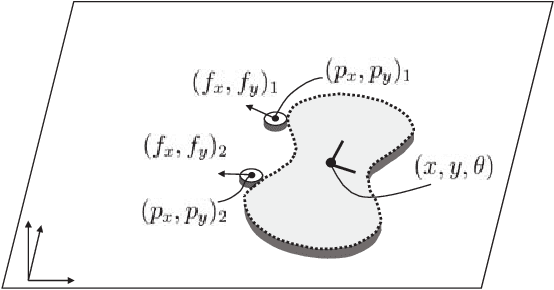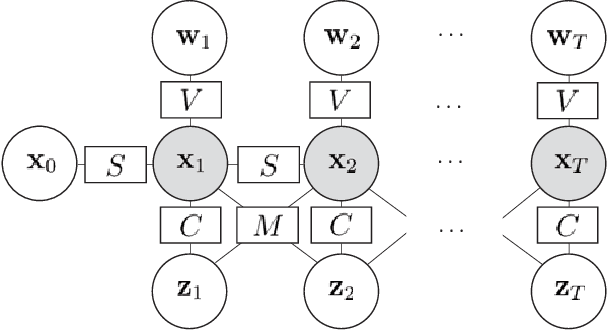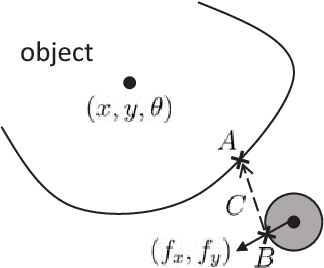Realtime State Estimation with Tactile and Visual sensing. Application to Planar Manipulation
Paper and Code
May 15, 2018



Accurate and robust object state estimation enables successful object manipulation. Visual sensing is widely used to estimate object poses. However, in a cluttered scene or in a tight workspace, the robot's end-effector often occludes the object from the visual sensor. The robot then loses visual feedback and must fall back on open-loop execution. In this paper, we integrate both tactile and visual input using a framework for solving the SLAM problem, incremental smoothing and mapping (iSAM), to provide a fast and flexible solution. Visual sensing provides global pose information but is noisy in general, whereas contact sensing is local, but its measurements are more accurate relative to the end-effector. By combining them, we aim to exploit their advantages and overcome their limitations. We explore the technique in the context of a pusher-slider system. We adapt iSAM's measurement cost and motion cost to the pushing scenario, and use an instrumented setup to evaluate the estimation quality with different object shapes, on different surface materials, and under different contact modes.
 Add to Chrome
Add to Chrome Add to Firefox
Add to Firefox Add to Edge
Add to Edge